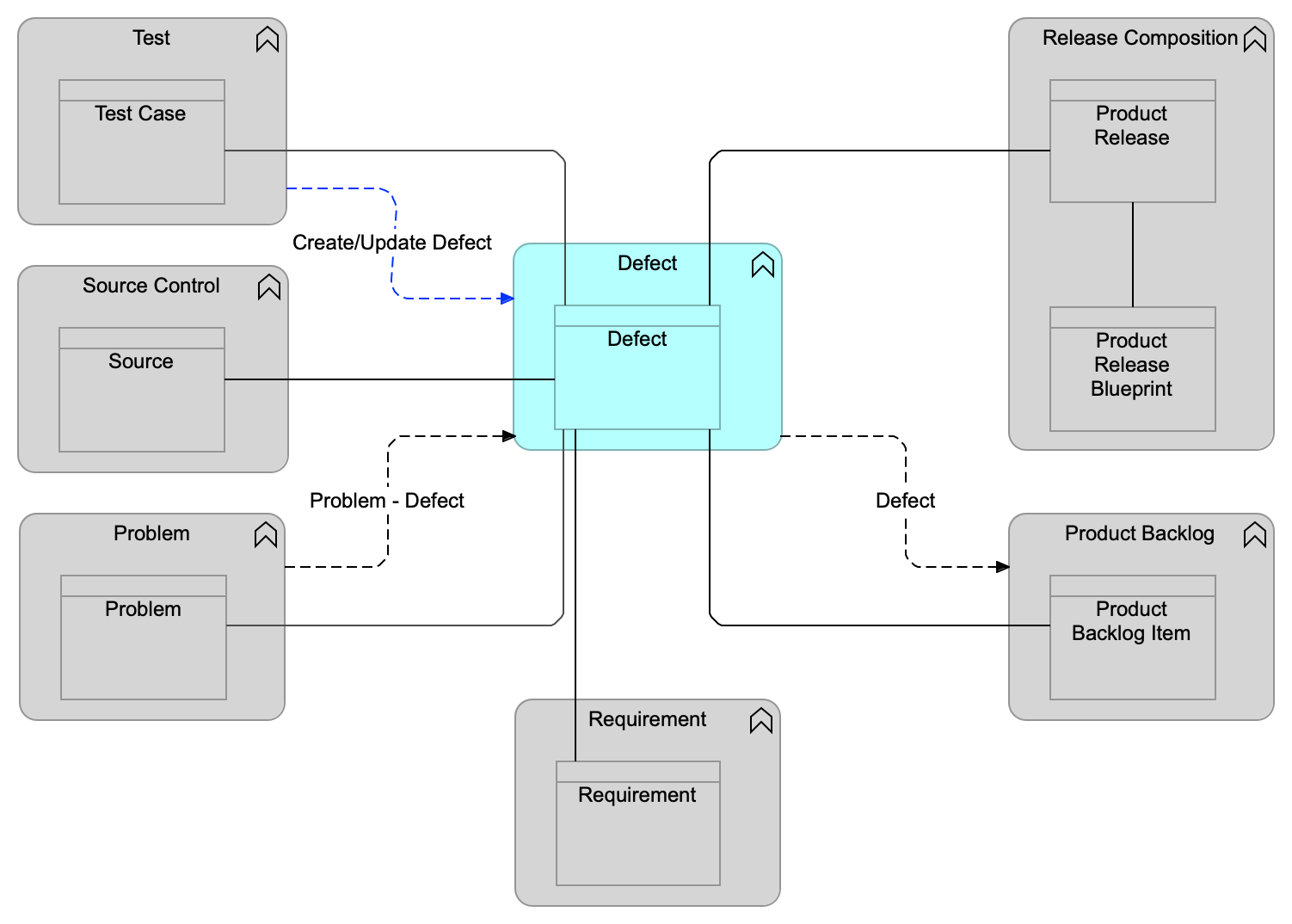Defect Functional Component

Purpose
The Defect functional component keeps track of all Defects; including their origin, status, importance, and relation to Requirements and Problems (or known errors). Defects of all types are registered (including security-related Defects), together with all relevant details such as description, severity, product version, related requirement. Defects can be analyzed, and resolutions found. Defects can be associated with Requirements.
| A Defect in this context can be any issue that impacts the product in delivering the expected value and outcome for the consumer as described in the product definition and requirements, such as poor user experience, potential vulnerabilities, maintainability issues, technical debt. This includes unfulfilled nonfunctional requirements mandated by policy even if they were omitted from the formal requirements process. In this case defect management should include updating any missing product requirements and design. |
The Defect functional component documents issues that should be communicated to the Release Composition functional component. The Defect functional component consumes Defects from the Problem functional component and the Test functional component, and these are in turn consumed by the Source Control functional component for review and resolution. Defect details can be updated, and used to decide on target release times. The Defect status can be monitored, and Defect reports provided. Defects that remain unresolved by service development can be converted to known errors for Problem Management to document, develop work-arounds for, and/or report in Knowledge Management articles.
The Defect functional component supports the Integrate value stream.
Functional Criteria
The Defect functional component:
-
Shall be the system of record (authoritative source) for all Defects
-
Shall manage the lifecycle of the Defect
-
Shall keep track of all Defects, including their origin, status, importance, and relation to Requirements and known errors
-
Shall register Defects of all types (including security-related) with all relevant details such as description, severity, application version, related requirement
-
Shall analyze Defects and find resolutions
-
May document issues that should be communicated to the Release Composition functional component
-
May consume Defects from the Problem functional component, as well as the Test functional component, that are in turn consumed by the Source Control functional component for review and resolution
-
Shall report Defect status and provide Defect reports
-
Shall create known errors for unresolved Defects (including the potential work-around and associated Knowledge Items) which can be published to consumers and used by the Operate value stream to provide remediation in case of Incidents
-
Shall receive Defect information from the Test functional component
-
Shall receive Defect information from a Problem (or known error)
-
Shall provide Defect information to the Product Backlog functional component (to plan and work on the Defect resolution in the Product Backlog)